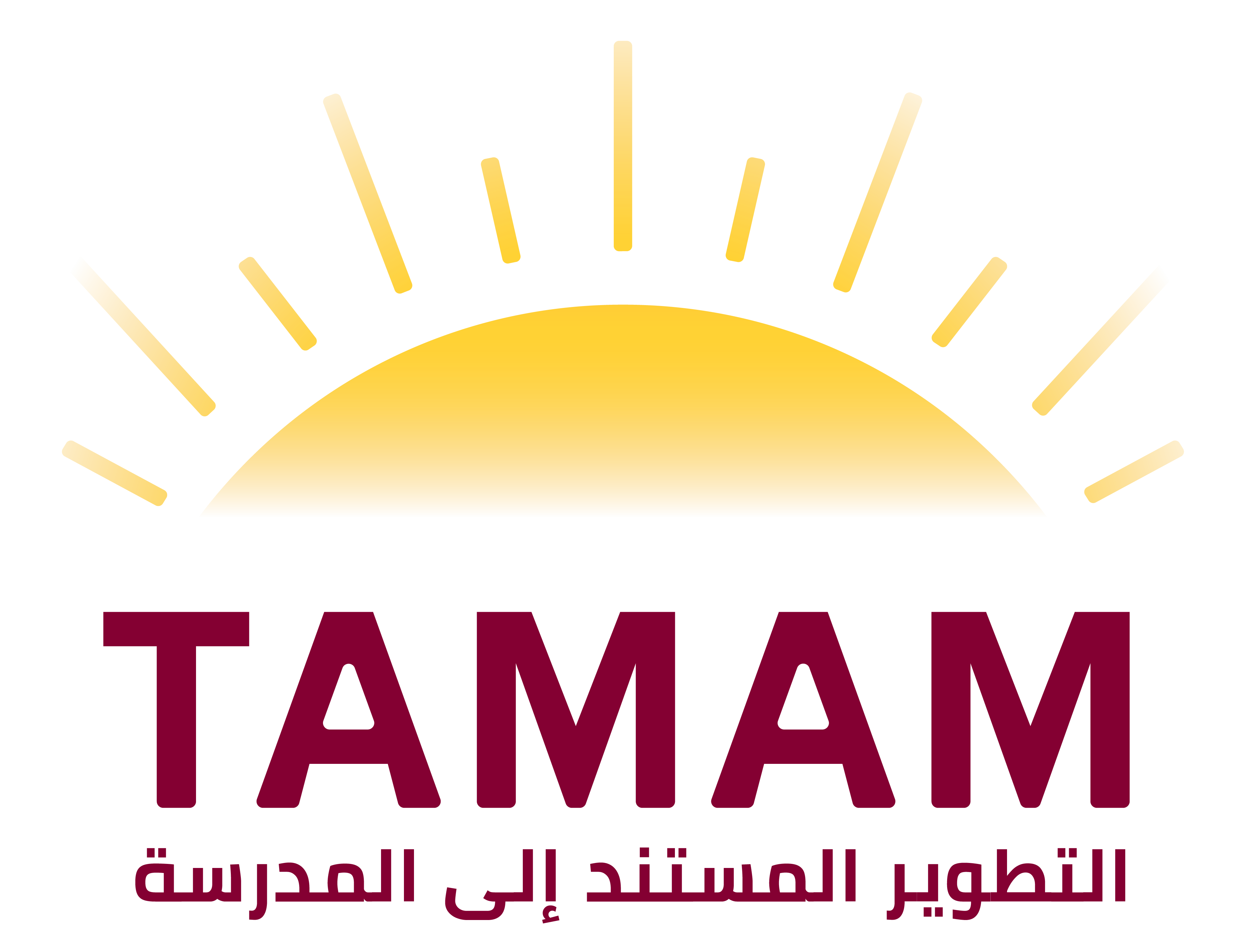PART ONE
INTRODUCTION
Chapter 1: A Guide to the Resource Book
A. Purpose of the Resource Book
B. Audience of the Resource Book (This resource book is addressed to coaches and serves as a guide for them to work with school teams)
C. Overview of the Resource Book
D. Guidelines for Using the Resource Book (A guide for the coaches to coach school teams and how to do it)
Chapter 2: TAMAM as an Educational Movement in the Arab Region
A. Challenges in the Arab Region
B. A shift in the existing paradigm: The TAMAM theory of change
- Theoretical Background
- TAMAM methodology
C. TAMAM: An educational movement for impactful school-based reform in the Arab region
PART TWO
FOUNDATIONS OF THE TAMAM’S CAPACITY BUILDING PROGRAM
Chapter 3: Building Capacity for Sustainable School-Based Improvement
A. Establishing School University Partnerships
B. Effective professional development for professional learning
C. Adult learning theories
D. The coach as a mentor
E. The coach as an inquirer
E. Participative evaluation and accountability
Chapter 4: Schools as Self-Renewing, Innovative and Professional Communities
A. The Social Transformational Role of The Educational Institution
B. Self-Renewal and Sustainable Improvement in Schools
PART THREE
THE JOB-EMBEDDED EXPERIENCE OF THE SCHOOL IMPROVEMENT TEAM
This part describes in detail the steps to be undertaken by TAMAM coaches as they build capacity for a school improvement team.
Chapter 5: The Targeted Learning Outcomes
A. The TAMAM pillars and competencies
B. The process of initiating and leading School Based Improvement
C. Motivation for engaging in school-based improvement
Chapter 6: The TAMAM Job Embedded Learning Experience
A. Theoretical Background of the TAMAM School Improvement Journey
B. Characteristics of the School Based Improvement Journey
C. Stations of the journey
D. Outputs from Participating in the School Improvement Journey
PART FOUR
THE COACHING PROCESS IN TAMAM
Chapter 7: Coaches Roles and Responsibilities
A. The Concept of Coaching in TAMAM
B. TAMAM Coaches’ Characteristics
C. Roles and responsibilities of coaches
D. Additional Roles
E. Coaches and Documentation in TAMAM
Chapter 8: Setting the Stage for Initiating the TAMAM Capacity Building Program
This part is a narrative of the steps required in the templates to plan, implement and evaluate the learning outcomes.
A. The coaching process in TAMAM
B. The preparatory phase for coaching
- Understanding the school broader community: Becoming informed about the country, ministry of education of that country, services from NGOS, local government entities, current and potential funders for school improvement.
- Selecting school team members
- Identifying the school teams’ learning needs
Chapter 9: Planning, Implementing, and Evaluating the TAMAM Capacity Building Program
A. Determining the Coaching Needs
B. Setting the Initial Plan for Coaching
C. Implementing and Monitoring the Coaching Plan
D. Planning for Evaluation
E. Evaluating the Effectiveness of the Coaching Plan
Chapter 10: Evaluating the Effectiveness of TAMAM’s Capacity Building Program
A. TAMAM’s Evaluation Goals
B. TAMAM’s Evaluation General Questions
C. Evaluation Criteria: for Evaluating process and impact
D. Data Collection Methods and tools
E. Data Management and Analysis
F. Drawing Conclusions and recommendations
Chapter 11: The TAMAM Coaching Approach: Coaching the TAMAM way
This chapter is a narration of the approach adopted in coaching in TAMAM along with several tips to be used by coaches for ensuring a proper and impactful experience
PART FIVE
RESEARCH AND KNOWLEDGE PRODUCTION IN TAMAM
Chapter 12: Research and Knowledge Production in TAMAM
A. Introduction
B. Documentation
C. Forms of Research in TAMAM
D. Dissemination of TAMAM Knowledge
PROLOGUE
EMERGING IMPACT AND NEXT STEPS
A. Expanding the Capacity Building Program:
- Building Capacity for Organizational Development at The School Level
- Building School Community partnerships: The Socio-Cultural Approach
- Building Student Leadership
B. Establishing a Professional Network
C. Preparing the training for trainers’ modules.
D. Developing Research Partnerships
Appendix 1: The Modules
A. The TAMAM Competencies
B. The Journey Stations
